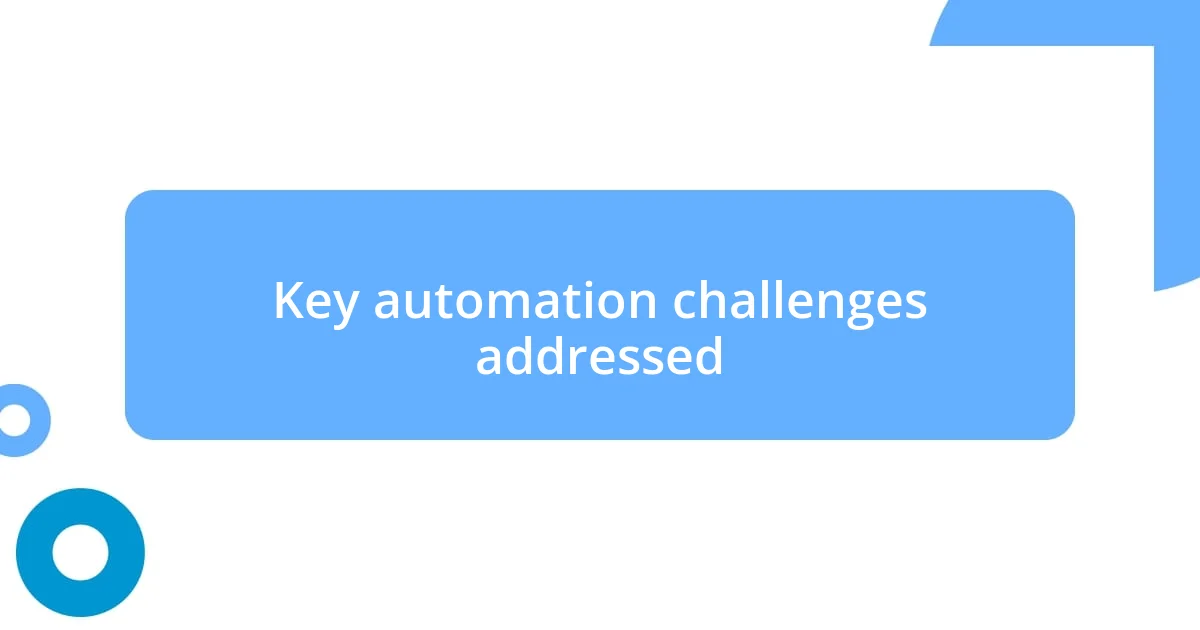Key takeaways:
- Edge computing drastically reduces latency and optimizes bandwidth, leading to improved operational efficiency and cost reductions.
- Collaboration with cross-functional teams enhances project outcomes, and continuous evaluation based on user feedback drives iterative improvements.
- Measuring success involves tracking KPIs such as response time, cost savings, and user satisfaction, with the latter highlighting technology’s impact on morale.

Understanding edge computing benefits
One of the standout benefits of edge computing is its ability to drastically reduce latency. I remember implementing edge solutions in a smart manufacturing environment; the speed of data processing and decision-making improved our operations immensely. Have you ever experienced the frustration of waiting for data to update? That instant access fundamentally changes how we react to situations.
Another key advantage is bandwidth optimization. When I first started using edge devices, I was surprised by how effectively they managed data traffic. By processing data close to where it is generated, we can decrease the amount of information sent back and forth to centralized servers. Isn’t it amazing to think about how this helps reduce costs while keeping operations running smoothly?
A deeply personal insight I’ve gained is the enhanced security edge computing provides. In a world where data breaches are all too common, knowing that sensitive information can be processed locally brings peace of mind. Think about it: wouldn’t you feel more secure if your data didn’t have to travel far and wide?

Key automation challenges addressed
Key automation challenges in the realm of edge computing can often feel daunting, but they are surmountable with the right approach. I recall when we faced issues with inconsistent data quality during our initial automation projects. The lack of reliable data hindered our ability to make accurate predictions. By leveraging edge computing, we were able to standardize data processing at the source, which greatly improved the data integrity across our operations.
Moreover, integrating automation with existing systems can be tricky. It took me a while to navigate this challenge, especially when dealing with legacy systems. I remember feeling overwhelmed at times, but the adaptability of edge computing helped streamline this integration. It acted like a bridge, allowing seamless communication between new automated processes and our older infrastructure. Here are some of the key challenges edge computing addressed:
- Data latency: Significant reductions in response time.
- Data quality: Enhanced standardization at the source.
- System integration: Smooth communication with legacy systems.
- Scalability concerns: Easier to scale up operations as needed.
- Cost efficiency: Reduced bandwidth usage leading to lower costs.

Integrating edge computing into projects
Integrating edge computing into projects can seem intimidating at first, but I’ve found it to be quite a transformative process. For instance, when we initiated an edge deployment for real-time monitoring in our production line, I felt a rush of excitement as I witnessed the system adapt so quickly. It’s like when you first learn to ride a bike; at first, it feels wobbly, but once you find your balance, everything smooths out beautifully.
One pivotal aspect I learned is the importance of collaboration with cross-functional teams. I distinctly remember a project where our IT and operational staff worked side by side, which drastically enhanced our understanding of the edge capabilities. It was enlightening to see how combining their distinct viewpoints led to more innovative solutions than I could have imagined alone. Embracing this cooperative spirit can be key to successfully enhancing your project’s outcomes.
Lastly, I’d emphasize the necessity of continuous evaluation and feedback loops. In my experience, the more I iterated on our edge solutions based on real-world usage, the more refined our systems became. I still tear up a bit thinking about the pride I felt when we made a significant improvement just by paying attention to user feedback. Have you ever experienced that feeling when things come together perfectly? Achieving that synergy can take your project to new heights.
| Aspects of Integration | Key Insights |
|---|---|
| Project Initiation | Look for quick wins that build momentum |
| Team Collaboration | Continuous communication fosters innovation |
| Evaluation & Feedback | Embrace iterative improvements based on usage |

Tools for implementing edge computing
When it comes to implementing edge computing, I’ve found that choosing the right tools can make all the difference. For instance, I remember the first time we adopted a lightweight cloud service specifically designed for edge processing. The immediacy of data access felt revolutionary, like unlocking a door to a previously hidden room of insights. It enabled our devices to perform analytics right at the source, minimizing latency and dramatically enhancing our response times.
Another powerful tool in our arsenal was the use of IoT devices equipped with advanced analytics capabilities. I recall a project where we installed sensors across our machinery. The data these sensors generated was processed locally, which not only reduced our bandwidth costs but also gave us real-time insights that were previously unattainable. Have you ever felt that rush when you realize you’ve tapped into something powerful? That’s exactly how I felt every time our systems flagged potential equipment failures before they escalated into costly downtimes.
Lastly, integrating edge gateways turned out to be a game-changer. These devices acted as vital intermediaries, connecting our local processing units with the cloud. I vividly remember a scenario where a minor connectivity issue was swiftly resolved thanks to these gateways automatically rerouting data. It reinforced my belief that having the right tools not only simplifies complexity but also creates a safety net for our automation efforts. How about you? Have you discovered tools that transformed your approach to edge computing?

Measuring success of edge computing
Measuring the success of edge computing is not just about numbers; it’s about understanding the tangible benefits it brings to my operations. I remember one instance where we established key performance indicators (KPIs) like response time and data accuracy. Watching those metrics improve was exhilarating—it felt like my efforts were being validated in real time. Have you ever experienced that rush when the numbers align perfectly with your expectations? It’s truly gratifying.
Another metric that stood out for us was cost savings. Implementing edge computing reduced our reliance on data centers significantly. In one project, I distinctly observed a drop in bandwidth costs as data was processed locally. This wasn’t just effective; it felt like finding hidden treasure in our budget. It makes me wonder how much more efficiency could be unlocked if more organizations prioritize similar strategies.
Additionally, user satisfaction is an essential metric that often gets overlooked. After deploying edge solutions, I conducted surveys and the feedback was overwhelmingly positive. Seeing the smiles on my team’s faces was rewarding; they felt empowered and more in control of their tasks. Isn’t it incredible to think that technology can not only improve processes but also uplift morale? This emotional aspect of success can be just as significant as the financial or operational gains.













